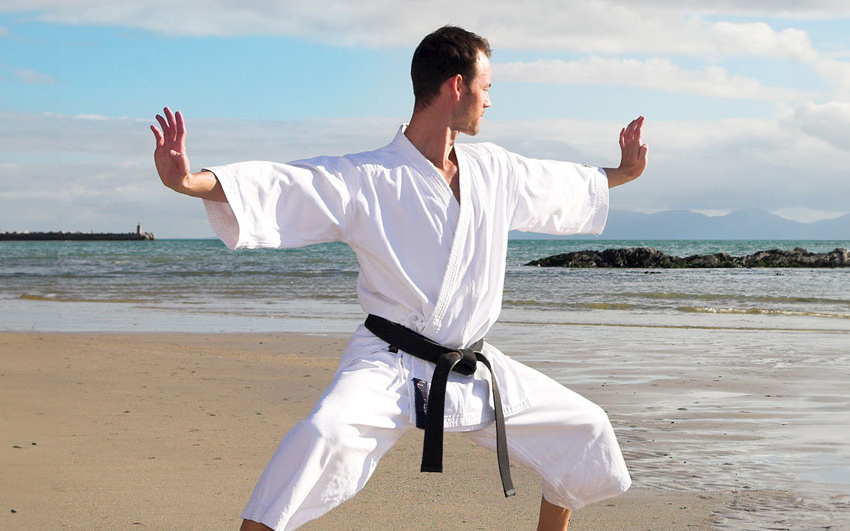Discover a different dimension of meditation and unleash the power within through an ancient martial art form, Kata. This profound practice, deeply rooted in the essence of Karate, offers not only physical fitness but also mental equilibrium. Known as the ‘meditation in motion’, Kata is a graceful blend of martial arts techniques, showcasing the beauty of balance, precision, and power.
In this journey of exploration, we will delve into the significance of Kata in Karate and how it serves as a form of meditative practice. Each movement in Kata is an emblem of self-discipline, self-awareness, and focus, leading to mental clarity and calmness. The practice is like a beautifully choreographed dance, creating a unique tapestry of strength and serenity.
By unlocking the secrets of Kata, we will navigate the subtle art of channeling energy through fluid motion. We will look at how this can stimulate mindfulness, improve physical well-being, and foster emotional balance. The emphasis will be on understanding the profound correlation between mind, body, and soul that Kata initiates, transforming the practitioner’s overall health and wellness.
Embark on this intriguing journey as we shed light on the traditional art form of Kata, a serene voyage from the outer world of Karate to the inner realm of meditation. Stay tuned for a deep dive into the world of Kata, unraveling its rich layers, benefits, and the unique tranquility it offers. Brace yourself for an experience that promises to be invigorating and enlightening. 🥋🧘♂️🌿
Understanding Kata: The Art of Moving Meditation
The essence of karate is captured in the practice of kata, a sequence of movements that serves as a form of moving meditation. Kata comprises patterns of defense-and-attack that are strung together in a smooth, flowing sequence. Let’s delve deeper into this remarkable aspect of karate.
Exploring the Basics of Kata
Kata, which translates to “form” in English, involves a precise sequence of karate moves performed against a series of imagined opponents. Each kata is a comprehensive training routine that incorporates kicks, punches, strikes, blocks, and stances. The exact moves and their sequence vary from one kata to another. Some commonly practiced katas include Heian Shodan, Tekki Shodan, and Kanku Dai, each with a unique rhythm and complexity.

The Significance of Kata
The practice of kata in karate is not merely about physical exercise. It’s a full-body workout that integrates the body and the mind, fostering mental clarity and focus. A karateka (karate practitioner) performing a kata must visualize their opponents and respond accordingly, which enhances spatial awareness and strategic thinking.
The Mechanisms of Kata: Moving Meditation
Meditation is often associated with stillness, but kata introduces a dynamic form of meditation. The practice of kata demands a high level of concentration and mindfulness, which leads to a meditative state.
Mind-Body Integration
In kata, the movements are not performed in isolation; rather, they are executed in a way that integrates the whole body. The practitioner must synchronize their breathing with their movements, cultivate a strong core, and maintain a correct posture. This level of mind-body integration is very similar to practices such as yoga or tai chi.
The Role of Visualization
Visualization plays a critical role in kata. The karateka must visualize their opponents and plan their moves strategically. This requires a heightened state of mental awareness, akin to a meditative state.
Benefits of Kata Practice
The practice of kata in karate is filled with numerous benefits, both physical and mental.
Physical Fitness and Coordination
Kata practice enhances physical fitness and coordination. The movements involve the whole body, improving strength, flexibility, balance, and agility.
Mental Benefits
Kata also provides mental benefits. The focus required to execute the kata sequence promotes mindfulness and concentration.
Learning Kata: A Step-by-Step Approach
Learning kata is not a process to be rushed. It requires consistent practice and patient refinement of each movement. Here is a step-by-step approach to learning kata:
- Begin with basic katas and gradually progress to more complex ones.
- Practice each move slowly and precisely.
- Visualize the opponents and the application of each move.
- Synchronize your breathing with your movements.
- Perform the kata in a fluid, continuous manner.
Understanding and mastering the art of kata is a journey of self-improvement and self-discovery, mirroring the essence of karate itself. With continuous practice, the kata transcends from being a physical exercise to becoming a form of moving meditation, providing a unique pathway to mindfulness and inner peace.
Conclusão
In conclusion, the art of kata within karate can be seen as a dynamic form of meditation, a graceful dance of movements that harnesses both the physical and the mental self. By challenging the body with a series of complex moves, and the mind with the task of visualization, kata promotes mindfulness, concentration, and a unique mind-body integration. The journey towards mastering kata is not a race, but a constant process of learning, practice, and refinement. This practice presents not just a method for physical fitness and coordination, but also an avenue for mental clarity, strategic thinking, and inner peace. In essence, kata is much more than just a series of karate moves. It is a representation of the very soul of karate, a harmonious blend of physicality, mentality, and spirituality. As we explore and delve deeper into the world of kata, we embark on a journey of self-discovery and self-improvement, in sync with the true essence of karate.

